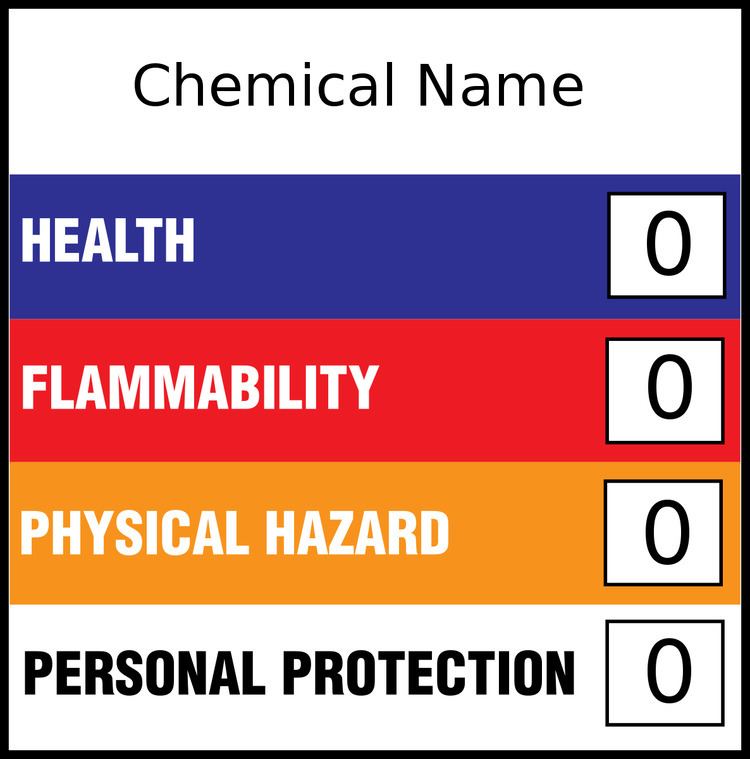 | ||
The Hazardous Materials Identification System (HMIS) is a numerical hazard rating that incorporates the use of labels with color developed by the American Coatings Association as a compliance aid for the OSHA Hazard Communication Standard.
Contents
HMIS Color Bar
The HMIS Color Bar is similar to the fire diamond, created by the National Fire Protection Association (NFPA). Before 2002 the fire diamond and the color bar both had sections colored blue, red, white, and yellow. After April 2002, with the release of HMIS III, yellow in the color bar (which stood for reactivity) was replaced by orange, standing for physical hazard. The fire diamond is designed for emergencies when information about the effects of short, or acute, exposure is needed. The color bar is not for emergencies and is used to convey broader health warning information.
Symbols
The four bars are color-coded, using the modern color bar symbols with blue indicating the level of health hazard, red for flammability, orange for a physical hazard, and white for Personal Protection. The number ratings range from 0-4.
Blue/Health
The Health section conveys the health hazards of the material. In the latest version of HMIS, the Health bar has two spaces, one for an asterisk and one for a numeric hazard rating. If present, the asterisk signifies a chronic health hazard, meaning that long-term exposure to the material could cause a health problem such as emphysema or kidney damage. According to NPCA, the numeric hazard assessment procedure differs from that used by NFPA.
Red/Flammability
For HMIS I and II, the criteria used to assign numeric values (0 = low hazard to 4 = high hazard) are identical to those used by NFPA. In other words, in this category, the systems are identical. For HMIS III, the flammability criteria are defined according to OSHA standards.
Orange/Physical Hazard
Reactivity hazard are assessed using the OSHA criterion of physical hazard. Seven such hazard classes are recognized: Water Reactives, Organic Peroxides, Explosives, Compressed gases, Pyrophoric materials, Oxidizers, and Unstable Reactives.
White/Personal Protection
This is by far the largest area of difference between the NFPA and HMIS systems. In the NFPA system, the white area is used to convey special hazards whereas HMIS uses the white section to indicate what personal protective equipment (PPE) should be used when working with the material. A guide is located here, http://www.ilpi.com/msds/ref/hmis.html
